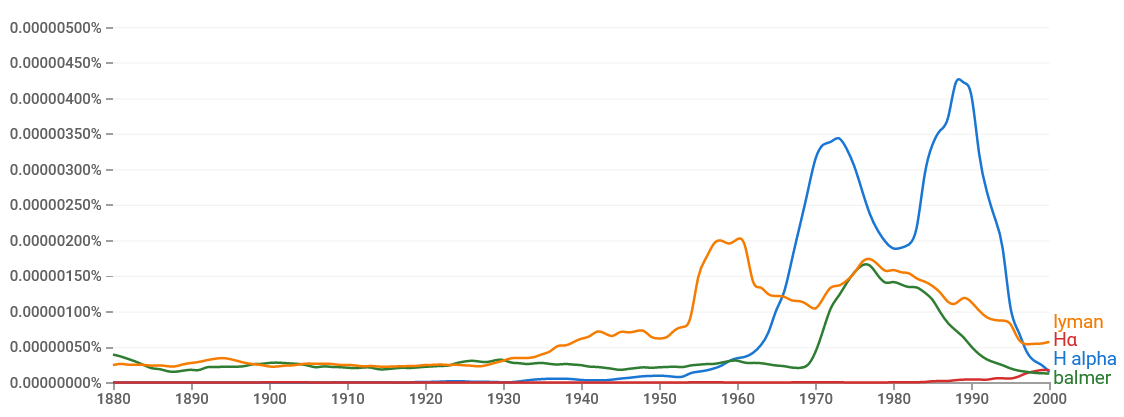The H-alpha line is used by astronomers to trace the presence of hydrogen in galaxies or to view protuberances on the Sun. When was the H-alpha emission of astronomical objects such as galaxies first observed ?
2 Answers
It's surprisingly hard to research this, partly because the name "H-alpha" only became common towards the end of the 19th Century, and partly because (I get the impression) a lot of mid- and late-19th Century spectroscopy ignored the red end of the spectrum, perhaps because the equipment was less sensitive there. Thus, you can find a fair amount of discussion from the late 19th Century about emission lines from nebulae which are focused on the blue region of the spectrum, with a mysterious line near 5005 or 5006 Angstrom (what we now know is [O III] 5007) referred to as the "principal line", and no mention of H-alpha at all.
Nevertheless, it seems pretty clear that Huggins & Miller observed H-alpha in emission from the 1866 outburst of the recurrent nova T Corona Borealis -- they noted the appearance of a bright line near or at "Fraunhofer's C" line (the old name for H-alpha), and referred to its association with hydrogen as "extremely probable". (Even clearer is an emission line at the location of "Fraunhofer's F" line, which is H-beta.) I think this might qualify as the first real astronomical observation of H-alpha in emission.
The earliest observation of H-alpha in emission from the Sun was by the French scientist Pierre Janssen in 1868, during an eclipse of the Sun, when he passed the light from the solar corona through a spectrograph and recorded the spectrum on a photographic plate. (He also observed a mystery emission line that turned out to be the first evidence for helium.)
Seemingly easy question, but actually not trivial to answer.
Wikipedia on H-alpha as well as other entries in other encyclopedias obviously mention the Balmer series and that the spectral line was discovered by Johann Balmer in 1885, but that does not answer your question about the first astronomical observation. The article on the Balmer jump cites a publication as early as 1957, but I am doubtful whether that is really the first publication on the topic.
Using google ngrams on a book-standard corpus as oracle, you could obtain pictures as the following:

There is no prominent peak for any of the keywords lyman, H alpha, or balmer which might support my hypothesis, that the first (astronomical) use of Balmer's discovery before mid 1950. However, I cannot explain the two maxima of the (blue) H alpha line (pun intended) in the ngram time series.